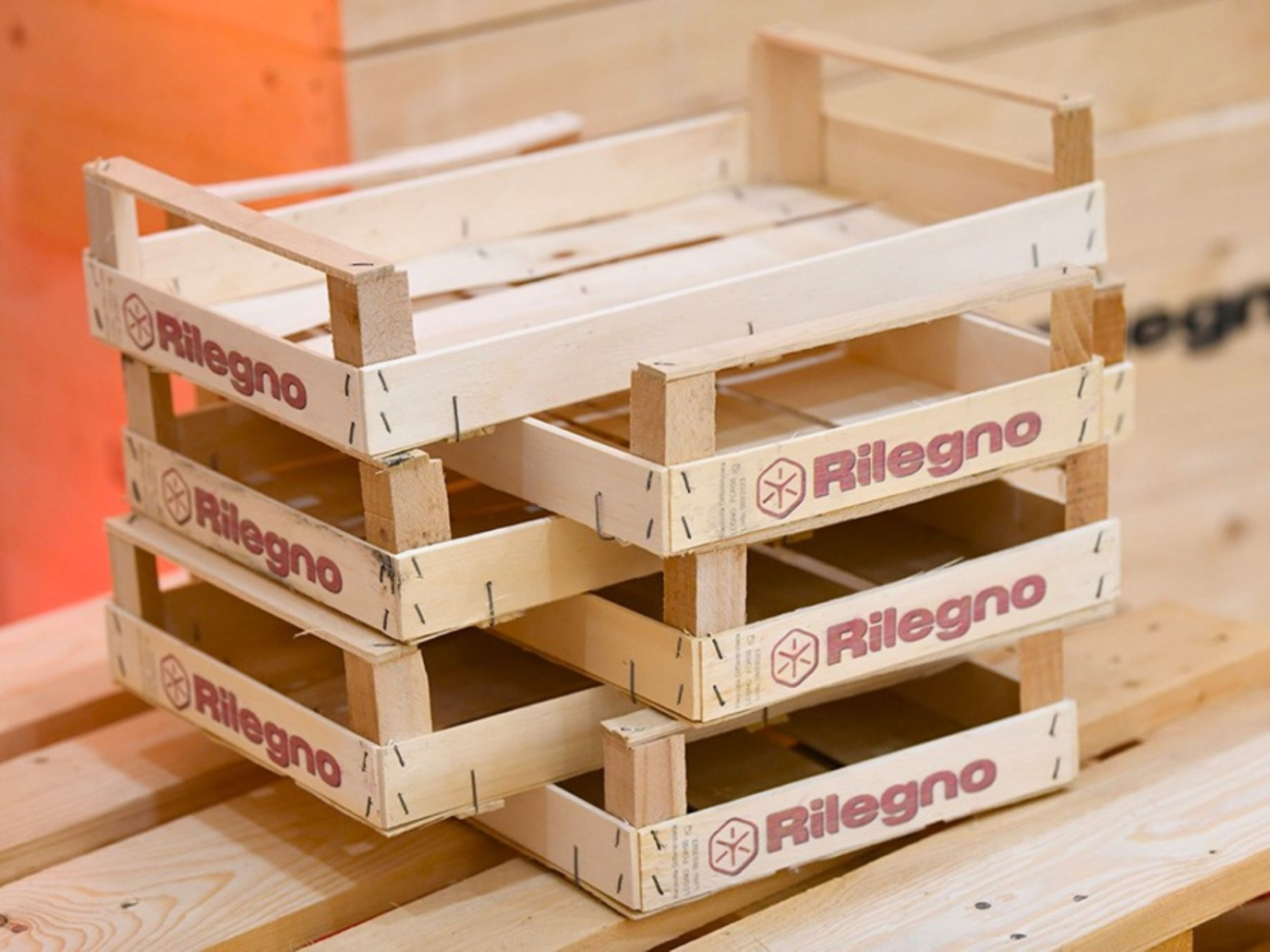The wooden packaging recycling sector is not very well-known. Perhaps because it’s rarely disposed of at home, or because there are no dedicated bins or door-to-door collection, this type of waste is less noticeable. However, the amounts that are in use are by no means trivial. A growing number of pallets, boxes, crates, and spools are being used especially in industrial and commercial settings. And the outcomes of collection and recycling – combined with lots of reuse and refurbishment – are satisfactory.
Nicola Semeraro, the president of Rilegno – Italy’s consortium for the recovery of wooden packaging – takes stock of the challenges in the sector for Renewable Matter.
Can you tell us about the 2022 data for wooden packaging recycling and reuse?
The Rilegno system collected and recycled 1,717,000 tonnes of wood in 2022. The recycling rate for packaging in relation to total production – which amounted to 3.4 million tonnes – was 62.74%. This figure puts us near the top of European leaderboards and is over twice as high as the EU target of 30% by 2030.
In addition to recycling, which concerns end-of-life wood, in recent years Rilegno has built up a strategic operation, established as part of the goals of the Ronchi Decree, namely the regeneration and reuse of wooden packaging. Over 900,000 tonnes of packaging were put back on the market in 2022, with waste prevention operations involving approximately 70 million pallets.
Rilegno guarantees the recycling and recovery of wooden packaging throughout all of Italy and manages the supply chain that enables the reintroduction of this natural, precious, and infinitely recyclable material into the production cycle. The Rilegno network comprises 1,971 consortium members, 378 collection platforms providing capillary coverage of the territory, and 15 recycling plants.
Efficient management of wood recycling is not just an expression of a commitment to a more sustainable world, it is also an economic resource giving rise to a truly circular economy that is important for the country. Wood recycling generates new materials, and thus new products. 95% of recycled wood is used to create chipboard panels, which are the lifeblood of the furniture industry.
What are the social and economic impacts of the supply chain?
A study published by the Polytechnic University of Milan measured the social, economic, and environmental impacts of the recycling and regeneration supply chains managed by Rilegno. The findings show that this system generates an economic impact estimated at approximately 3.1 billion euros, providing over 10,000 jobs and “savings” in terms of CO2 emissions amounting to 1.8 million tonnes. We can confidently state that wood reuse and recycling are a concrete and consolidated economy.
What innovations are we seeing in the use of wood derived from packaging?
The post-consumer wood recycling industry in Italy is oriented primarily toward the production of chipboard panelling, used in the production of furniture, furnishing accessories, and interior and exterior cladding for homes and offices. Today, chipboard producers use only wood that comes from the post-consumer recovery sector, thanks to forward-thinking industry research in the sector that led to setting this goal. Over the years, companies in the sector have invested heavily in the production of know-how and reached such a degree of specialisation that they can now accept any kind of wood-based waste. Their systems enact mechanical selection and cleaning processes of incoming material, with a low environmental impact and high production yield.
Which other innovative uses of the secondary raw material can we mention?
In addition to the production of chipboard, recycled wood has some niche uses such as the production of cellulose pulp for paper mills; wood-concrete blocks for construction, in accordance with bioconstruction protocols for buildings; sustainable pallet blocks for pallet production; or, again, as the basic component for the creation of innovative biofilters, which can filter combustion fumes by reducing pollutants and capturing CO2.
What are the future challenges for the Rilegno Consortium?
We imagine a future in which sustainability becomes the norm, part of our day-to-day life, a way of thinking and acting. We aim to bring this about through awareness initiatives aimed primarily at the world of young people. From an operational perspective, we are working to make wooden packaging “smarter”. In the age of data-governed business processes, we want to design packaging that is not simply a container for goods but can be a source of data relating to its contents.
This article is also available in Italian / Questo articolo è disponibile anche in italiano
Images: Rilegno
© all rights reserved



